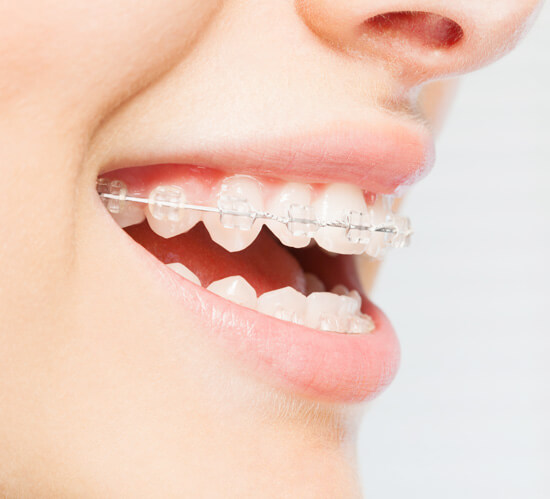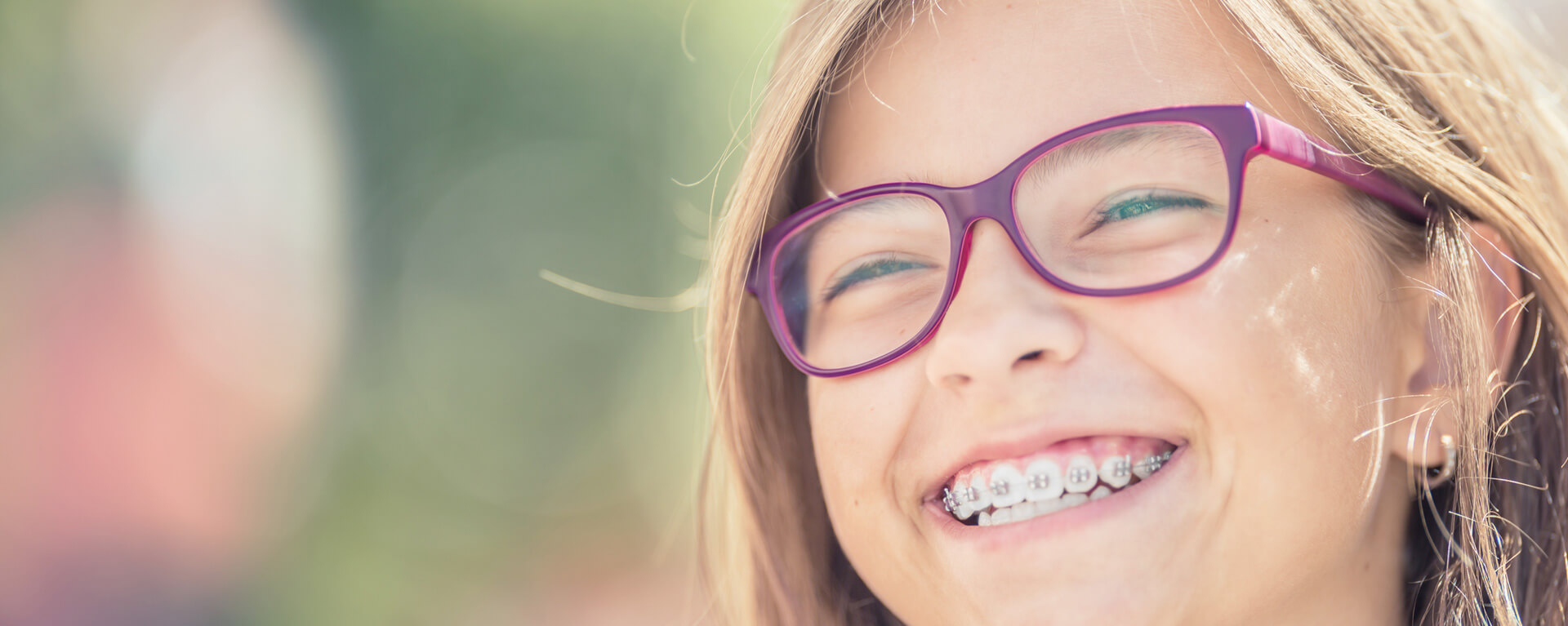Fixed Braces
Most patients require the use of fixed orthodontic appliances (often known as ‘train tracks’) to have straight teeth and achieve the best possible improvement of their smile.
Modern brackets are quite small, and they cover a relatively smaller area of each tooth, making braces more attractive than they used to be. There are different types of fixed braces, some are clear and barely noticeable at all.

Benefits of Fixed Braces
Fixed braces are very good at achieving fine detail, and making the smile look perfect!
- With fixed braces, there is no plastic in the roof of the mouth. This means speech is unaffected and the flavour of food can be enjoyed.
- As the appliance cannot be removed, it acts full-time and is very effective.
- Conventional braces have become much smaller and less noticeable than they used to be and so more trendy.
- We regularly use aesthetic, tooth-coloured braces to help you feel more confident about wearing an orthodontic appliance.
- More adults are wearing braces, and it has become acceptable and usual to see adults with fixed braces.
Fixed Brace Types
Damon/Self-ligating braces
Damon self-ligating braces can achieve a more effective result for certain cases and are generally more expensive than the traditional brackets. Self-ligating braces help to treat severely overcrowded cases without the need for teeth extraction as the self-ligated brackets produce low friction between brackets and wires, therefore resulting in more effective tooth movement using light forces. These braces also result in a wider smile and allow for expanding the jaws with reduced risks. See Patient Cases
Stainless Steel Fixed Braces
The brackets in these fixed braces are made of metal, are quite small, and they cover a relatively smaller area of each tooth, making braces more attractive than they used to be. These conventional braces are very practical, reliable, and relatively fast-acting. See Patient Cases
Clear / Ceramic Fixed Braces
The brackets are made of ceramic or plastic; they are translucent or the same colour as the teeth, making them much less noticeable than metal brackets. See Patient Cases
Coloured Braces
These are basically the normal metal braces, but the modules used to hold the archwire in place come in a multitude of colours to make the wearing of braces more fun. These colours can be changed at every appointment.
Lingual Braces
Lingual braces are fitted on the inside of each tooth and as such are hidden. They can achieve the same result as fixed metal or ceramic braces or Invisalign, however appointment times tend to be longer and are much more expensive.
Fixed Braces FAQs
Fixed appliances, by definition, cannot be removed by the patient. The simplest way to think of each bracket is as a handle with which it is possible to control each tooth individually and precisely. In the early part of treatment, a thin archwire is fitted to link up all the brackets. Because the teeth are irregular, the wire has to bend up and down or in and out between the teeth. This is the clever bit: the wire, a bi-product of NASA research, has perfect shape memory and will gradually return to its original shape, bringing the teeth with it.
As treatment progresses, stiffer wires are fitted and these act as a monorail. At this time, tiny springs and elastics are also used to guide the teeth in the desired directions.
- Before braces are fitted, your teeth should be cleaned and conditioned.
- Fitting a fixed brace does not hurt.
- Depending on your treatment, fixed braces can be fitted either in a single appointment or two appointments.
- Most of the fixed brace consists of several brackets. These are little square-shaped metal or ceramic buttons which are glued to the teeth.
- The fitting of fixed braces is completed by connecting the bands and/or brackets with a thin piece of wire called archwire that is held in place using small elastics called modules. These come in different colours to make the wearing of braces more fun.
- You should not feel any pain while the braces are being fitted as the braces are simply glued to your teeth. No needles, sharp objects or injections of any kind are used.
- For the first 4-5 days after your appliances have been fitted, and for a day or two each time they are adjusted, you may experience some discomfort and slight toothache.
The level of this discomfort varies quite a bit from individual to individual. In general, the teeth may feel a little sore, slightly loose, and tender to biting pressure. Painkillers such the ones you would normally take for headaches would take care of any soreness or discomfort that may be experienced for the first few days. - Parts of the brace may rub on the lips, cheeks or tongue. You can apply orthodontic wax on the bracket that is rubbing against your inner cheeks or lips (tear off a small piece of wax, roll it into a small pea-sized ball between your fingers, and gently mould this over any part of the brace that feels sharp). This acts as a cushion, keeping your lip or cheek away from the brace components.
- After those first few days of orthodontic treatment, braces become comfortable to wear, and most of the time patients forget that they even have them on their teeth. We use the latest miniature orthodontic braces, advanced clinical techniques and state-of-the-art wire technology to ensure that right from the start very light gentle forces are applied to the teeth, thus minimising any discomfort.
- Stick to a softer diet for the first few days.
- If you have discomfort from a wire poking, contact the practice so that an emergency appointment can be arranged as soon as possible to adjust your fixed brace.
Fixed braces are not very good at major alterations to the bite. For this, other appliances are used either before or at the same time as the fixed braces. Examples include changing the relationship of the jaws with a functional appliance or moving the upper teeth back to improve bite with headgear.
Elastics are used to move teeth vertically and horizontally and can improve the bite and they require patient compliance to achieve the best result. Adults who require a correction / improvement of the bite, would need to have orthognathic surgery (cutting through the jaw) along with brace treatment to achieve the ideal result.



